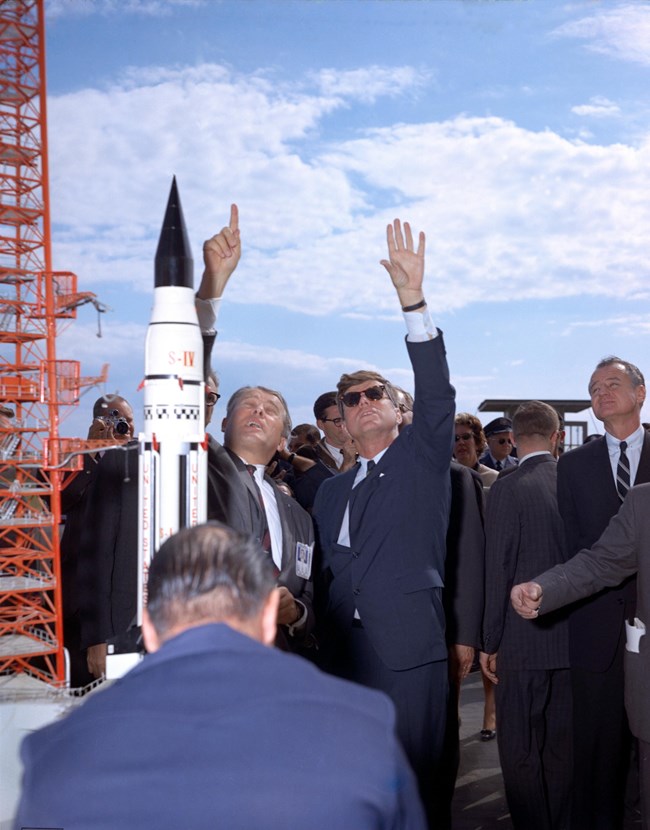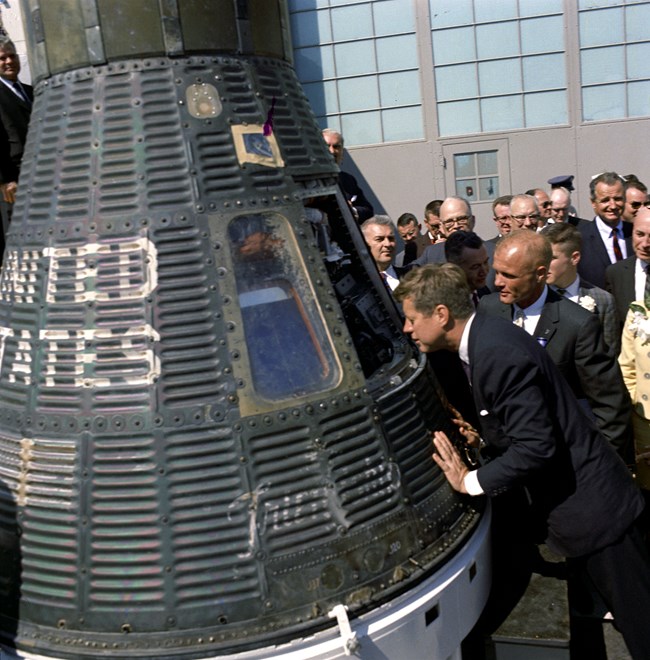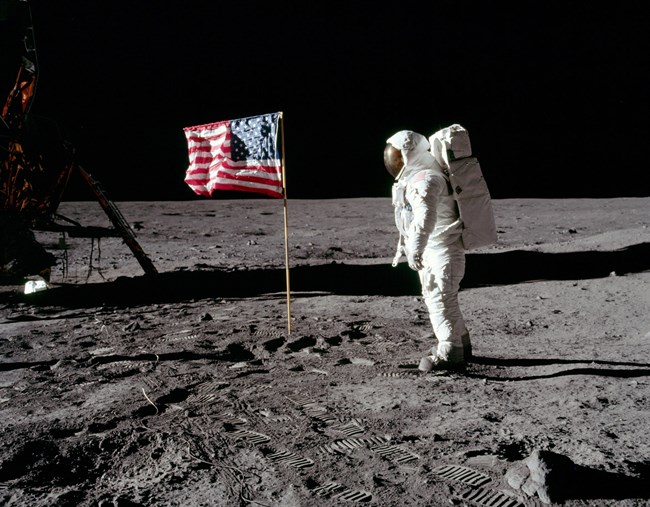
NASA Early on, the Soviet Union made great progress in space. “Sputnik”, the first artificial satellite, was launched in 1957. Four years later, Yuri Gagarin, a Soviet pilot and cosmonaut, became the first human to travel into outer space. In the early 1960s, it appeared that the United States was falling behind in the Space Race. When John F. Kennedy became president in 1961, he wanted to improve America’s chances of winning it. 
JFK Library, ST-A13-60-62 The National Aeronautics and Space Administration (NASA) worked hard to make President Kennedy’s Moon Shot a reality. In 1961, astronaut Alan Shepard Jr. became the first American to travel into space. The following year, astronaut John Glenn Jr. orbited the earth. These were major accomplishments in the quest for the moon, and others would follow. 
NASA President Kennedy did not live to see his dream fulfilled. However, he will be forever remembered for his contributions to the Space Race and for challenging Americans to “think big.” As we celebrate this spectacular national achievement, consider: What is your own personal “Moon Shot?” 
NPS |
Last updated: September 2, 2020
